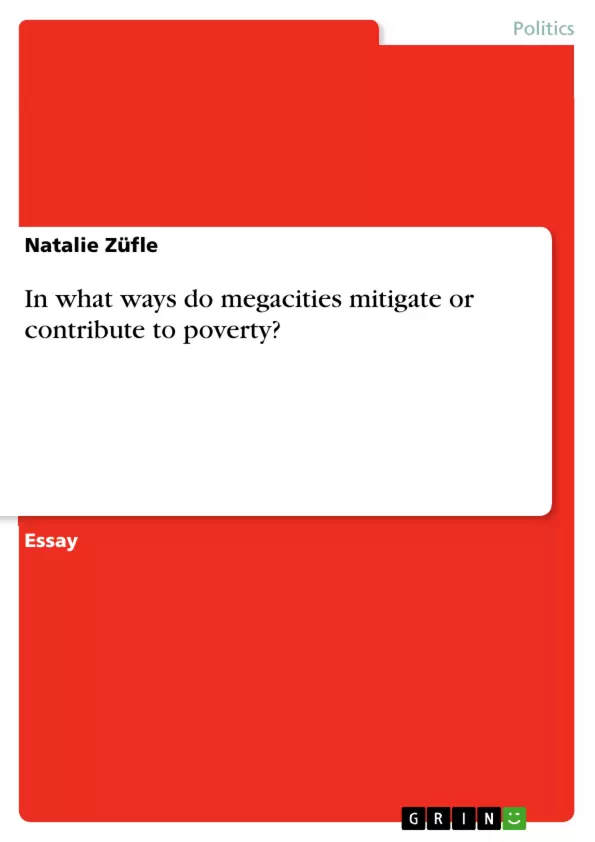Moreover, large cities attract investment, which in turn creates new jobs, even in the low-level-sector. And additionally, the informal sector contributes a good share of jobs at low costs, in particular for the masses of poorly skilled people in the lower class. This sector distinguishes itself as dynamic and flexible with a high potential for those that can bring in new ideas. Last but not least it also “provides a safety net in countries that lack basic welfare services”, because streets offer a possibility to make social contacts (Clark 2003, p. 116).
Furthermore, local governments often enact regulations and work out other measures in order to meet the urban challenges of poverty (among them so called “pro-poor” social and economic policies in terms of supporting small-scale enterprises through credit and land provision, see Population Information Program 2002, p. 17). Often, NGOs and other international institutions support them in providing health care, improving sanitation and water supply, or public transport etc.
Average living standards in large urban areas are generally better, but often not for the cities’ poorest. Nevertheless, education or health care can be provided easier and more effective than in the countryside due to a better availability of hospitals and doctors per capita (see Cities Alliance, p. 1). More births take place in hospitals, and infant mortality as well as death rates among elder people are lower than in the countryside (Clark 2003, p. 128).
Inhaltsverzeichnis (Table of Contents)
- Dimensions and Indicators of Urban Poverty
- Mitigation
- Contribution to Poverty
Zielsetzung und Themenschwerpunkte (Objectives and Key Themes)
This text examines the complex relationship between megacities and urban poverty. It aims to analyze how megacities can both mitigate and contribute to poverty, highlighting the diverse social and economic factors at play.- The impact of megacities on poverty levels and distribution
- The role of economic growth and productivity in poverty mitigation
- The challenges of informal employment and the lack of formal regulations
- The consequences of slum formation and its impact on living conditions
- The importance of government policies, NGO initiatives, and international collaboration
Zusammenfassung der Kapitel (Chapter Summaries)
- Dimensions and Indicators of Urban Poverty: This section provides a detailed overview of different dimensions and indicators used to measure urban poverty across various regions and cities globally. It presents data on population density, slum prevalence, access to sanitation and water, and poverty rates, highlighting the challenges of obtaining consistent data across different contexts.
- Mitigation: This section explores how megacities can contribute to poverty reduction. It focuses on the role of economic growth, the concentration of human resources, and the efficiency of providing basic services in urban areas. The text also highlights the importance of investment attraction, job creation, and the dynamic nature of the informal sector in supporting the poor.
- Contribution to Poverty: This section examines how megacities can contribute to poverty intensification. It discusses the formation of slums, the challenges faced by the urban poor in terms of living conditions, exploitation, and lack of formal protection. The text also addresses the difficulties faced by the urban poor in accessing basic services, such as affordable food and education, due to high costs and limited access.
Schlüsselwörter (Keywords)
The text focuses on urban poverty, megacities, economic growth, informal sector, slums, living conditions, government policies, NGOs, and international collaboration. These key themes are explored through an analysis of data on population density, poverty rates, access to basic services, and the impact of urban development on different social groups.- Quote paper
- Natalie Züfle (Author), 2008, In what ways do megacities mitigate or contribute to poverty?, Munich, GRIN Verlag, https://www.grin.com/document/180116



